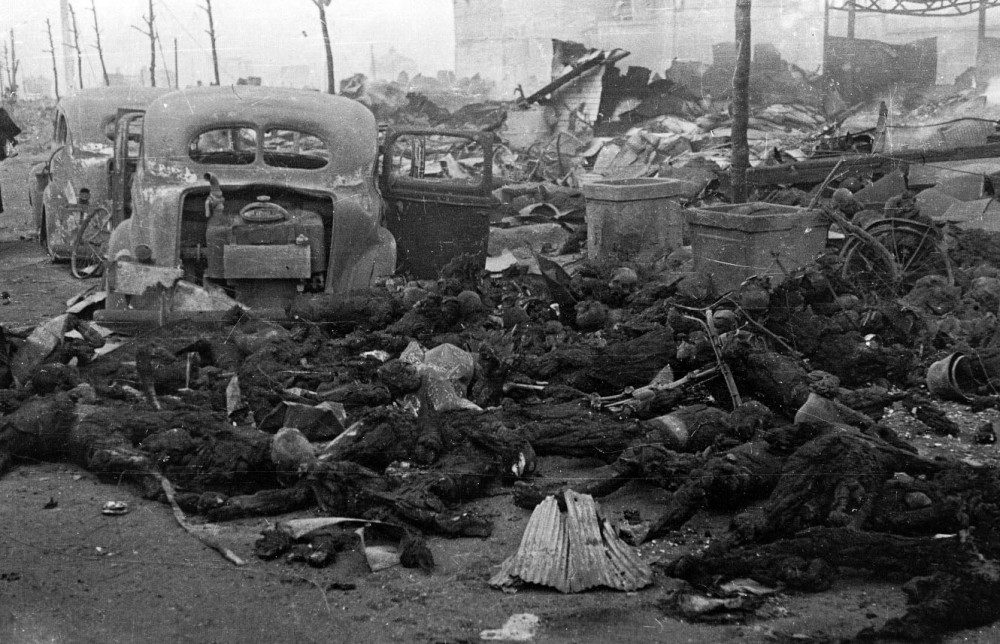Jacobin
Originally published 2015.3.9
 Today marks the seventieth anniversary of the American firebombing of Tokyo, World War II’s deadliest day. More people died that night from napalm bombs than in the atomic strikes on Hiroshima and Nagasaki. But few in the United States are aware that the attack even took place.
Today marks the seventieth anniversary of the American firebombing of Tokyo, World War II’s deadliest day. More people died that night from napalm bombs than in the atomic strikes on Hiroshima and Nagasaki. But few in the United States are aware that the attack even took place.The lack of ceremonies or official state apologies for the firebombing is unsurprising considering that many Americans see World War II as the “just war” fought by the “greatest generation.” These labels leave the war and the atrocities Americans committed during it largely untouched by critique.
The little that is available to study on the firebombing, at least here in the US, is told from the perspective of American crewmen and brass, through usually biased American military historians. Those seeking better understanding of the March 9 tragedy must wade through reams of history primarily devoted to strategy; the heroics of American soldiers; the awesome power behind the bombs unleashed that day; and a cult-like devotion to the B-29 Superfortress, the plane that dropped the napalm over Tokyo and the atomic bombs, and was the inspiration for George Lucas’s Millennium Falcon.
The overriding narrative surrounding the events of March 9, 1945 is that the American pilots and military strategists such as Gen. Curtis LeMay, the architect of the firebombing, had no other option but to carry out the mission. The Americans had “no choice” but to burn to death nearly one hundred thousand Japanese civilians.
MORE...

No comments:
Post a Comment